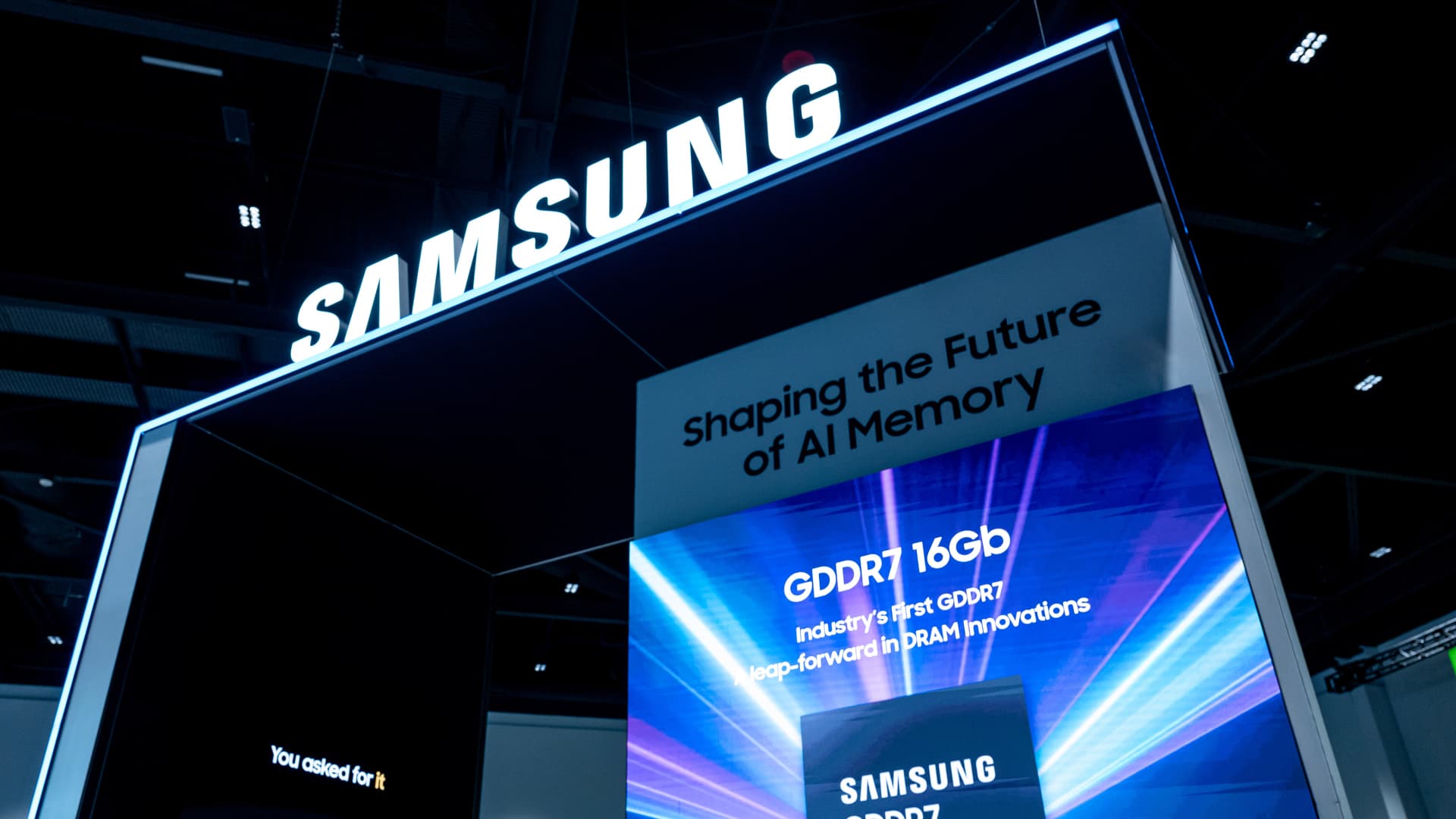Samsung Electronics has reported a significant downturn in its second-quarter operating profit, which more than halved from the previous year and fell short of market expectations. This considerable decline underscores a challenging period for the technology giant, primarily driven by a substantial slump within its crucial chip business. The reported profit of 4.7 trillion won marks a steep drop from the 10.44 trillion won recorded in the same quarter last year, painting a stark picture of current market conditions impacting key industry players.
The core issue behind this performance dip lies squarely with Samsung’s Device Solutions division, encompassing its memory chip, semiconductor design, and foundry business units. This segment experienced a staggering 93.8% year-over-year drop in operating profit. Specifically, the chip business alone posted a meager 400 billion won in operating profit, plummeting from 6.45 trillion won, alongside a revenue decrease from 28.56 trillion won to 27.9 trillion won.
Despite the sobering figures, a cautious optimism emerged during the earnings call. Samsung’s chief financial officer, Soon-cheol Park, expressed anticipation for a rebound in performance during the second half of the year. He suggested that the second quarter represented a bottoming out for the company, with earnings expected to improve steadily as the year progresses, signaling a potential turning point for the struggling chip business.
A key driver for this anticipated improvement stems from Samsung’s foundry business. Noh Mi-jung, vice president of Samsung’s Foundry division, highlighted expectations for revenue enhancement in the latter half of the year. This optimism is largely fueled by the impending full-scale mass production of the company’s next-generation 2-nanometer mobile chips, a critical development poised to boost Samsung’s position in the advanced semiconductors market.
Furthermore, the foundry business could receive a long-term boost from a significant deal to supply chips to a major company. While Samsung initially kept the counterparty undisclosed, Tesla CEO Elon Musk later confirmed his American electric vehicle maker was the client. This agreement involves the production of AI6 chips at Samsung’s Taylor facility, with Musk hinting the deal’s potential scale could exceed initial announcements, potentially attracting other major customers.
However, experts note potential challenges. Nam Hyung Kim, research partner and equity research analyst at Arete, pointed out that production costs at the Taylor site are expected to be significantly higher than those in Korea. He cautioned against premature conclusions regarding the deal’s impact on Samsung’s competitive standing against market leader TSMC, indicating that the foundry business currently stands at a “critical juncture between survival and profitability.”
Beyond the foundry and chip divisions, Samsung faces intensified competition in its memory business, which produces chips vital for servers, smartphones, and laptops. Recent data from Counterpoint Research shows SK Hynix has caught up with Samsung in memory revenues for the second quarter, making them fierce competitors for the top global memory market position. This competitive landscape demands strategic responses from Samsung to maintain its market share and profitability.
Looking ahead, Samsung has outlined plans to proactively address the growing demand for high-value-added and AI-driven products in the second half of the year. The company aims to strengthen its competitiveness in advanced semiconductors, particularly focusing on its HBM (High Bandwidth Memory) chips. While Samsung seeks certification from AI chip leader Nvidia, SK Hynix’s dominance in the HBM sector is expected to persist through the current year.
Amidst the challenges, Samsung’s mobile experience and networks businesses offered a silver lining, reporting an uptick in sales and profit. This unit posted an operating profit of 3.1 trillion won, up from 2.23 trillion won in the same period last year. Strong sales of its Galaxy S series and A series smartphones, along with Galaxy tablets, contributed significantly to this positive performance, allowing Samsung to defend its leading position in the global smartphone market with a 19% share.






Leave a Reply